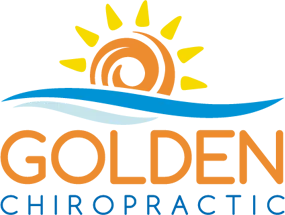
05/24/2019 by Dr. Goldi Jacques-Maynes
Herniated Disc Treatment: Get Back Into Life Faster
I have frequent pain in my lower back and leg due to a herniated disc at my L5 vertebrae on the left. As a mother of two and an avid skiier, staying active is important to me. As a business owner and doctor of chiropractic, I can't let pain keep me from serving my patients. When shooting pain in my leg from gardening happens during busy clinic weeks, my herniated disc feels almost like a disability.
The pain is debilitating. Not being able to perform my work without pain is stressful. Experiencing this pain again and again throughout my life is frustrating. That’s why I get regular adjustments to manage and prevent my herniated disc pain.
What are the symptoms of a herniated disc?
A herniated disc can cause excruciating pain. When you've got a herniated disc, it's extremely difficult to perform your daily activities or enjoy your favorite hobbies. Herniated disc symptoms include:
- Shooting pain in your hands or feet
- No ability to stand up straight
- Symptoms of Sciatica
- Numbness and tingling in your arms or legs. This happens because prolonged nerve compromise alters your body-brain connections
- A “pop” noise in your back or neck. A few hours to a day later, you start experiencing numbness, tingling or shooting pain from your neck into your arm, or from your lower back into your legs
Who is likely to get a herniated disc?
The common age for a herniated disc is between the ages of 25 and 55. As you age, disc herniation becomes less likely. Finally, some good news about aging!
Disc herniation happens twice as often in males. 95% of the time a disc herniation will happen in your lower back.
What exactly is a herniated disc?
A disc is commonly described as a jelly doughnut. It is a soft and squishy fluid, called the nucleus pulposus, wrapped inside of a rigid shell called the annulus fibrosus.
Over time, the annulus breaks down from a series of repetitive stress injuries. The culprit is usually improper and careless lifting technique.
Over time, the annulus weakens. Then something as simple as lifting up a feather could cause the nucleus to herniate out of the damaged annulus in the weakest place. The whole process resembles smashing a jelly doughnut in between your hands. Eventually, the jelly will find a way out of the dough in whichever direction the dough is weakest.
Initially, your body recognizes the disc tissue as an invasive tissue. Your immune system attacks the disc. This causes a massive inflammatory response to the foreign tissue, causing pain in the area where the herniation has taken place.
After a few days or a few weeks, symptoms in your hands and legs will begin to present. It feels like shooting pain. This is from inflammation and pressure from the disc affecting the nerve.
How do you diagnose a herniated disc?
Following a through history, we'll perform an examination. We may perform orthopedic tests designed to detect disc herniation. If a disc herniation is suspected, we'll recommend an MRI. An MRI can confirm the presence of actual disc tissue that has left its normal position in your spine.
What happens if I don’t get treatment for my herniated disc?
Left untreated, the pressure can lead to numbness, tingling and loss of function of the affected tissues. This includes symptoms such as loss of muscle mass, permanent numbness and loss of muscle control.
If treated properly, your body’s inflammatory response to the disc tissue will be reabsorbed by your body. Spontaneous disc resorption has been documented in a high number of cases. It’s important to maintain high levels of function and decrease pain levels. From there, the body will work its magic on the disc.
What’s the treatment for a herniated disc?
I have found that regular adjustments every week help to keep my pain and symptoms at bay.
Many studies have been published regarding disc herniation and chiropractic intervention.
Adjustment and exercise have been shown countless times to be safe. We believe these are the most effective drug-free methods to managing the pain while your body heals itself.
How do you prevent a herniated disc?
A disc herniation usually happens when someone is lifting something. Flexing and rotating your spine while bending, lifting or twisting can cause the herniation. Common examples include reaching into the back seat while sitting in your car, or lifting/pulling while bent over gardening.
Proper lifting mechanics are a big preventative factor.
If you are careful with your body, you can protect it from repetitive motion injuries.
Do you think you've got a disc herniation?
If you suspect a disc herniation, don't wait to get relief. Schedule an online appointment today and visit our experienced chiropractors in Aptos to get out of pain fast.
